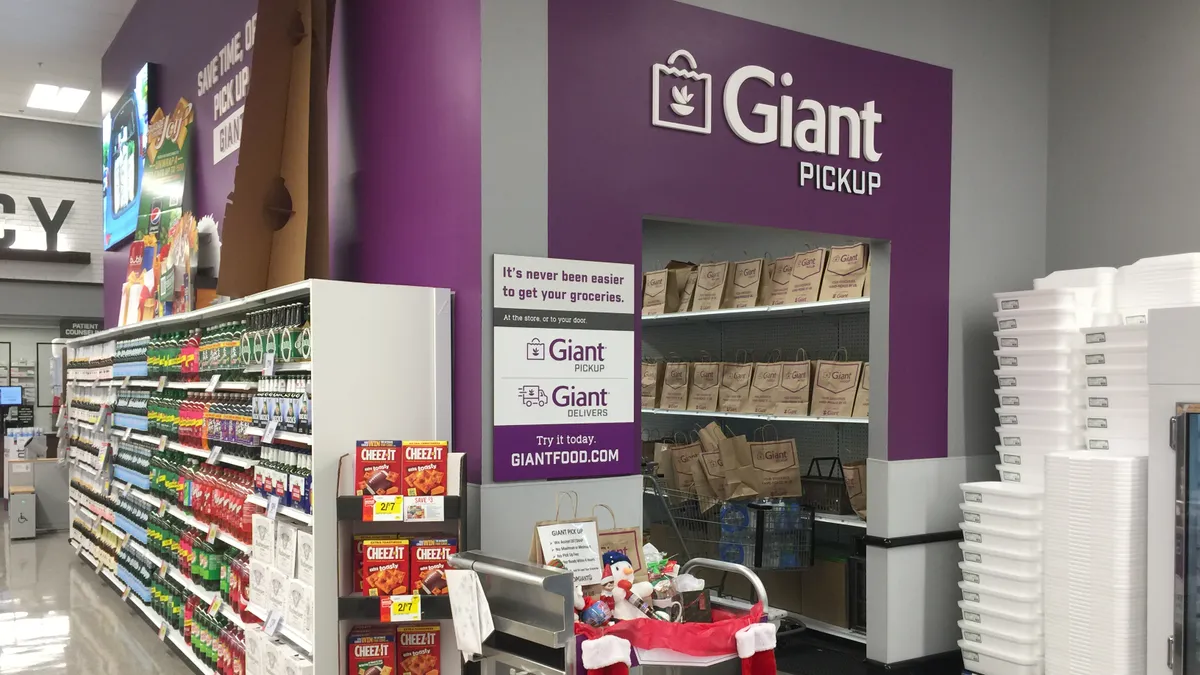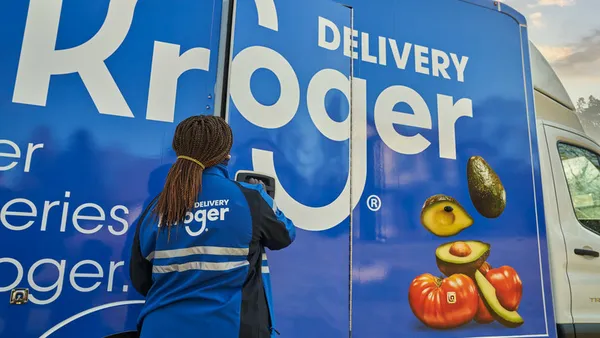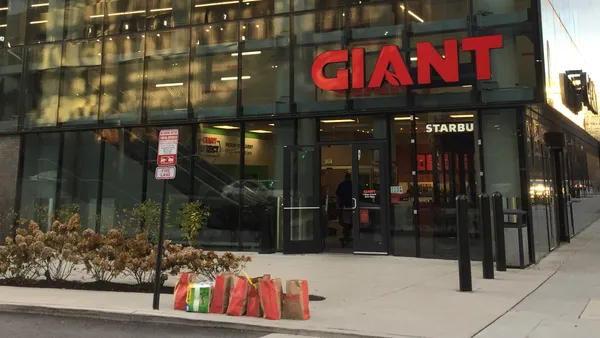Dive Brief:
- U.S. grocery e-commerce sales were up 2.4% in December compared with the same month last year, to $9.1 billion, driven by more households buying groceries online that month and a small uptick in average order values, according to survey data released Tuesday by Brick Meets Click and Mercatus.
- Pickup had a solid performance in December across several metrics and was the only fulfillment method to gain sales in December. Pickup represented approximately 48% of total online grocery spending last month — up a percentage point from the prior month, while delivery and ship-to-home accounted for roughly 35% and 16%, respectively.
- While December saw a rebound in grocery e-commerce, the findings indicate mass merchants are quickly gaining competitive advantages over supermarkets among online shoppers.
Dive Insight:
The increase in online grocery sales last month was just 2% lower than the record high of $9.3 billion seen in the first quarter of 2021, and more than half of all U.S. households bought groceries online during the month, up 4% from a year ago, per the findings.
Despite the strong December showing, the combination of average order values and more households placing orders online during the month trailed grocery inflation, Brick Meets Click and Mercatus noted.
Pickup saw its gain sales increase, up 14.7%, while delivery and ship-to-home both declined, down 1.8% and 16.2%, respectively, according to the survey of 1,715 shoppers between December 28-29, 2022.
During December, pickup benefited from the uptick in households shopping online, with almost 5% more monthly active users picking that method. Conversely, delivery saw a slight increase in monthly active users, while ship-to-home dropped more than 8%.
Order frequency among monthly active users grew slightly for pickup and dropped for both ship-to-home and delivery.
December saw the continued trend of cross-shopping between grocers and mass merchants like Walmart, with the latter making strides in online grocery competition. Ongoing inflation and customer satisfaction with mass merchants’ e-commerce likely drove the elevated cross-shopping level, which was also high in November, the survey noted. During December, more than 30% of the monthly active user base used both channels, up 130 basis points from a year ago.
Mass retailers contributed much more to the growth of total online grocery sales than grocery stores due to changes in monthly active users and average order values, the findings said.
Furthermore, mass retailers’ investments in pickup services, coupled with their traditionally lower prices and consistent store execution, are strengthening retention and engagement with their customers, David Bishop, partner at Brick Meets Click, said in a statement.
In December, the monthly active user base for mass merchants nearly tripled while grocers only saw a nearly 7% in that shopping base. Mass merchants also saw order frequency among monthly active users grow by 3% while it declined 7% for grocers.
Average order spending also grew three times faster for mass merchants with a 12% year-over-year increase, while the grocery channel saw a 4% gain.
“Regional grocers have many opportunities to improve the customer experience and the profitability of operating an online grocery service today,” Sylvain Perrier, president and CEO at Mercatus, said in a statement. “From our ongoing work and research into online customer behavior, we’ve learned how important it is to develop a strategy that makes sense both financially and operationally, and that builds on how a grocer is positioned in the market and with their core customers.”












